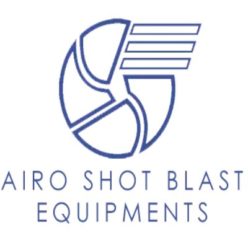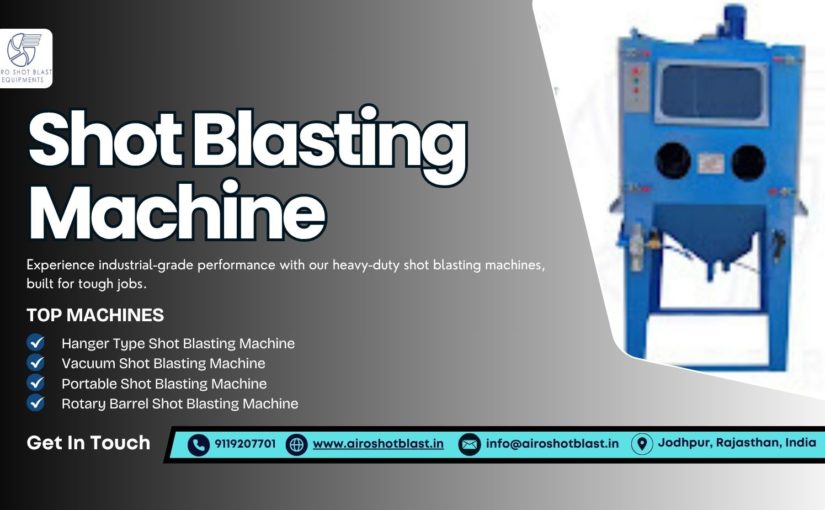Tired of manual blasting bottlenecks? Discover how switching to a high-volume shot blasting machine can boost efficiency, reduce labor costs, and deliver flawless surface finishes. Learn why automation is the game-changer your facility needs.
Introduction
If you’re still relying on manual blasting for surface treatment, chances are your production line is moving at a snail’s pace. In today’s competitive industrial landscape, time is money—and inefficiency can cost you dearly. So, ask yourself: Is manual blasting too slow? If the answer’s yes (and it probably is), it’s high time to automate with a high-volume shot blasting machine.
This isn’t just about speeding things up. It’s about upgrading your entire operation, slashing labor expenses, achieving consistently high-quality finishes, and staying ahead of your competitors. In this guide, we’ll dig deep into why automation is no longer a luxury—it’s a necessity. You’ll discover how high-volume shot blasting machines work, what benefits they bring, and how to choose the right one for your needs.
Why Manual Blasting Slows You Down: The Struggles of Manual Operations
Manual blasting isn’t just physically demanding—it’s painfully time-consuming and inconsistent. Operators need frequent breaks. Fatigue sets in. Quality drops. Productivity crawls. And the worst part? You’re bleeding profits without even realizing it.
Here’s what manual blasting typically looks like:
- Slow throughput: Only a small surface area can be treated at a time.
- High labor dependency: Skilled workers are needed continuously.
- Inconsistent quality: Human errors lead to uneven finishes.
- Greater material waste: Poor targeting wastes abrasives.
- Limited scalability: You can’t ramp up production on demand.
With all these setbacks, it’s no wonder forward-thinking manufacturers are asking: Manual blasting too slow? Automate with a high-volume shot blasting machine and never look back.
What Is a High-Volume Shot Blasting Machine?
A high-volume shot blasting machine is an industrial workhorse. It uses a high-speed stream of abrasive media—usually steel shots or grits—blasted at surfaces to clean, descale, or prepare them for coating.
But here’s the real kicker: automation. Unlike manual methods, these machines run on pre-set programs, handle bulk jobs without tiring, and produce uniform, professional-grade finishes every single time.
Common Types of High-Volume Shot Blasting Machines:
- Tumble Type Blasting Machines – Great for small to medium-sized parts in batches.
- Hanger Type Blasting Machines – Perfect for large, complex workpieces that need all-around cleaning.
- Table Type Blasting Machines – Ideal for heavy and flat parts.
- Continuous Belt Blasting Machines – Excellent for high-speed production lines.
5 Benefits of Automating with a High-Volume Shot Blasting Machine
1. Supercharged Productivity
Say goodbye to tedious hours of manual labor. These machines can process hundreds of components per hour. That means faster turnarounds, more output, and happier customers.
2. Consistent, Top-Notch Finishing
Tired of uneven blasting or missed spots? A high-volume shot blasting machine ensures every inch of your product is cleaned to perfection, no matter the size or shape.
3. Reduced Operational Costs
Although the upfront cost of automation may seem steep, the long-term ROI is undeniable. Lower labor costs, minimal rework, and efficient abrasive usage equal serious savings.
4. Safety First
Manual blasting exposes workers to dust, noise, and physical strain. Automated machines come with enclosures, dust collectors, and safety interlocks that minimize risk and protect your team.
5. Environmental Compliance
Modern machines come equipped with filtration and recovery systems that reduce waste and meet regulatory standards. That’s good for the planet—and your company’s reputation.
When Should You Make the Switch? Signs That It’s Time to Upgrade:
- You’re struggling to meet production deadlines.
- Surface finish quality is inconsistent.
- You’re spending too much on labor and abrasive media.
- Workplace safety incidents are becoming frequent.
- Competitors are outpacing you with faster deliveries.
If any (or all) of these apply, then yes—manual blasting too slow? Automate with a high-volume shot blasting machine now!
Choosing the Right High-Volume Shot Blasting Machine: Factors to Consider
Picking the right machine isn’t a one-size-fits-all affair. You’ll need to consider:
- Type of material being blasted (metal, cast iron, etc.)
- Size and shape of the components
- Volume of production (daily/weekly throughput)
- Finish quality required
- Floor space availability
- Budget constraints
A professional supplier will help you evaluate these and recommend a custom solution tailored to your needs.
FAQs: Everything You Wanted to Know (But Were Afraid to Ask)
Q1: Is automation suitable for small businesses?
Absolutely. Many compact, high-efficiency models are available for small-to-medium enterprises. You don’t have to be a giant to benefit from automation.
Q2: How long does it take to recover the cost of a shot blasting machine?
Most businesses report ROI within 12–18 months, depending on usage volume and operational costs.
Q3: Will my team need special training to use these machines?
Minimal training is needed. Most machines come with intuitive control panels, and reputable manufacturers offer full training support.
Q4: Can shot blasting machines handle delicate surfaces?
Yes! With proper media selection and pressure control, even delicate castings or intricate parts can be safely and efficiently blasted.
Q5: What kind of maintenance is required?
Routine checks, media replacement, and occasional part servicing. But nothing compared to the downtime caused by manual inefficiencies.
Real-World Success Stories
Case Study: From Lagging to Leading
A mid-sized fabrication company in Pune used to rely on five manual blasters working two shifts. They struggled to meet delivery schedules and faced constant quality complaints.
After switching to an automated hanger-type shot blasting machine, here’s what changed:
- Output increased by 220%
- Labor costs dropped by 40%
- Customer returns decreased by 90%
- Break-even in just 14 months
That’s not an exception. It’s what happens when you ask, “Manual blasting too slow?” and act decisively.
The Future of Blasting Is Automated
Industry 4.0 is here. Robotics, smart controls, and AI-integrated machines are transforming how surface preparation is done. Today’s machines can:
- Track performance metrics
- Adjust blast parameters in real-time
- Notify maintenance issues automatically
- Integrate with your ERP or MES systems
So if you’re still holding on to manual blasting, you’re not just slowing down your process—you’re falling behind the curve.
Conclusion: Time to Step Up Your Game
Let’s face it—manual blasting is outdated. It’s inefficient, costly, and dangerous in the long run. The solution? Automate with a high-volume shot blasting machine.
From enhancing productivity and improving safety to delivering flawless results, automation is no longer an optional upgrade—it’s a competitive necessity.
So don’t wait for your competitors to outpace you. If manual blasting is too slow, make the smart move. Automate with a high-volume shot blasting machine and give your production line the turbocharge it desperately needs.
Ready to Revolutionize Your Surface Preparation Process?
Contact a trusted shot blasting machine manufacturer today and explore your automation options. The future of blasting isn’t manual—it’s smart, fast, and powerful. Make the switch now, and blast your way into a more productive future!

